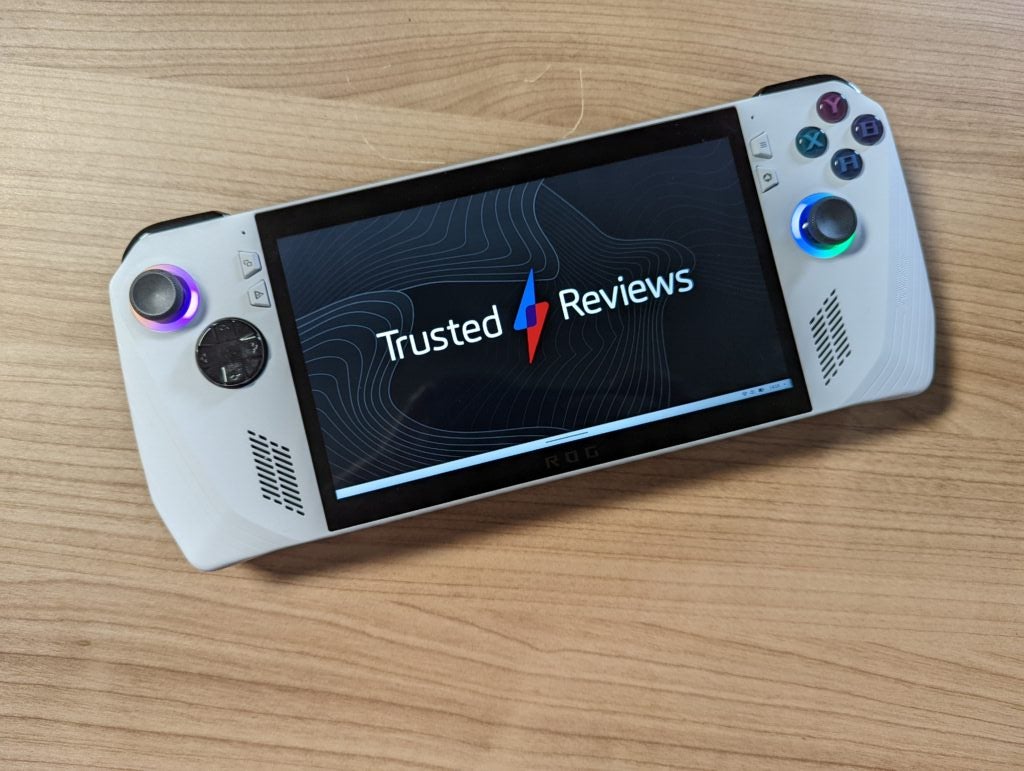The Steam Deck OLED is the new successor to the original Steam Deck, flaunting several new features such as an improved screen, more efficient processor and a lighter design.
There’s no doubt that the Steam Deck OLED is a big upgrade on its predecessor, but how does it differentiate to the likes of the Asus ROG Ally?
We’re yet to finish our review of the Steam Deck OLED, but we’ve used our early impressions and breakdown of specs to write up this handy comparison with the ROG Ally. So if you’re stuck between the two gaming portables, this guide should help you make up your mind.
Steam Deck has an OLED screen
The headline feature of the Steam Deck OLED is of course the OLED screen. The popular screen technology enables the portable to display deeper blacks, resulting in superior contrast and therefore better picture quality than an LCD.
The Asus ROG Ally is restricted to a cheaper LCD panel, which isn’t quite as vivid or punchy. It’s also limited to a peak brightness of 500 nits, while the Steam Deck OLED can hit up to 600 nits for SDR content, and 1000 nits for HDR content.
It’s not all bad for the ROG Ally in the screen department though, as it has a higher resolution at 1080p (compared to 800p) for a sharper picture and a higher refresh rate at 120Hz (compared to 90Hz).

ROG Ally is more powerful
The Steam Deck OLED has been treated to numerous upgrades over Valve’s original handheld system, including moving to a new processor. However, the OLED version is not more powerful than its predecessor, with reports indicating its performance is almost identical.
With the top configuration (AMD Ryzen Z1 Extreme) of the Asus ROG Ally boasting a performance advantage over the original Steam Deck, this means it should still be more powerful than the new OLED iteration.
According to our most recent benchmarks tests, the ROG Ally saw around a 15fps performance advantage compared to the original Steam Deck for modern AAA games. This means the ROG Ally is better equipped to handle demanding new games, and can also take advantage of the higher refresh rate.
Steam Deck runs on SteamOS
One of the biggest differences between the two handhelds is the operating system they use, significantly impacting the user encounter. Both have their own advantages and disadvantages.
The Steam Deck runs on SteamOS, which has been streamlined for use in handheld mode. It results in a smooth encounter, making it easy to download games from the Steam Store and run them on the portable. It’s not so easy to run games beyond the Steam Store though, as you’ll need to use the Linux desktop to access third-party software, which isn’t very user friendly. This also makes it difficult to launch applications such as Xbox Game Pass.
Meanwhile, the ROG Ally runs in Windows 11. This is the same software used on a desktop PC or laptop, resulting in a compromised and clunky encounter that can be difficult to complete simple tasks such as downloading games, entering passwords and tweaking settings. The upside here is that it’s easier to access third-party applications such as Xbox Game Pass, GeForce Now and Epic Game Store.

Steam Deck OLED has a larger battery
Battery life is one of the most important aspects about a handheld PC system, so Valve has made sure to enhance the capacity to a generous 50Whr. In comparison, the Asus ROG Ally is restricted to a 40Whr cell.
The capacity of a battery isn’t always indicative of how long it will last between charges, but Valve has also decided to add in a more power-efficient processor compared to the original Steam Deck. This should better the battery life, although we haven’t completed the tests to demonstrate this just yet.
Valve claims the Steam Deck OLED can last between 3 and 12 hours on a single charge, while the ROG Ally only lasted up to 4 hours in our battery tests (and just 90 minutes when running demanding games such as Horizon Zero Dawn).

